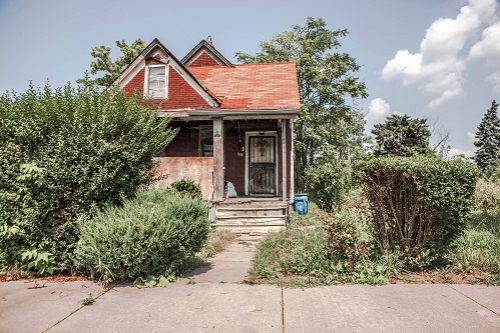- What is extended replacement cost on homeowners insurance?
- How does extended replacement cost work?
- How much is extended replacement cost?
- Is extended replacement cost worth it?
- How to calculate how much extra coverage you need
- Extended replacement cost vs. guaranteed replacement cost: What’s the difference?
What is extended replacement cost on homeowners insurance?
Extended replacement cost coverage is an endorsement you can add to your home insurance policy that acts like a buffer to help safeguard against cost overruns. It extends your coverage so you can hopefully rebuild the home you once loved, including the marble countertops and upgraded hardwood floors.
What you pay for extended replacement cost coverage varies according to the insurer, but it can generally be purchased in increments of 10% to 50% above the basic dwelling coverage.
How does extended replacement cost work?
If you have a claim for damage to your home that exceeds the dwelling coverage, the replacement cost endorsement kicks in. Here is an extended replacement cost example to better understand how it works:
- A fire destroys your home, and your policy's dwelling coverage is $300,000.
- The cost to rebuild the same home is $350,000, leaving you $50,000 short.
- If you have a 25% extended coverage endorsement on your policy, your dwelling coverage would increase to $375,000, easily covering the extra costs.
“This type of coverage is widely available and highly recommended by insurers, especially if you live in an area prone to large-scale natural disasters like hurricanes or wildfires,” Collins says.
How much is extended replacement cost?
Talk to your insurer to find out how much extra this will cost. Online insurance company Hippo says you can expect to pay in the range of $50 and up for the addition. Pricing will vary depending on the size and features of the home, as well as location. Each company prices this differently.
Be prepared to pay a little more if you live in an area that is at increased risk for such threats as wildfires, floods or hurricanes.
Is extended replacement cost worth it?
Extended replacement cost is an affordable endorsement on your home insurance policy that provides peace of mind. While only you can decide what coverage is worth the expense, extended replacement cost is highly recommended for all homeowners.
"I would not buy homeowners insurance without an inflation guard," says Bill Wilson, who served as the associate vice president of research for the Independent Insurance Agents & Brokers of America until 2016 and now advises the industry.
Who needs extended replacement cost coverage?
Everyone can benefit from having extended replacement cost coverage. There's no way to predict how construction costs will change over time, but it's a safe bet that it will go up.
Extended replacement cost coverage provides the peace of mind of knowing that no matter what happens, your home is protected.
How to calculate how much extra coverage you need
There is no sure way to predict how much additional coverage you may need in a disaster, but there are several ways to get a better handle on how much it would cost to rebuild your home today.
A good place to start is by having that conversation with your insurer. Insurers regularly update coverage limits based on construction cost information provided by builders in local markets. This has become particularly critical in the current environment.
Another good strategy is to look at the build prices of new homes in your area. This could be done simply by attending a few new home open houses and talking to builders about the average cost per square foot to build a home similar to yours.
If your home has many custom features or upgrades, it may be wise to hire a professional appraiser. The appraiser can physically inspect your home and come up with a much more accurate estimate of replacement costs right down to the countertops, custom cabinetry, bathroom features and flooring.
Extended replacement cost vs. guaranteed replacement cost: What’s the difference?
If you're looking for absolute certainty that all replacement costs will be covered, no matter the circumstances, there's one further product to consider: guaranteed replacement cost coverage.
That one word – guaranteed – is the key difference. Guaranteed replacement cost coverage will pay to rebuild your house back to its previous size, features and specifications.
"Guaranteed replacement cost coverage was designed to give a policyholder total peace of mind that their property would be fully covered without the risk of running out of funds," says Collins.
Not all insurance companies offer guaranteed replacement cost, which may cost a little more than an extended endorsement, but it could save you a lot of money if you need to file a major claim.




